Want to add amazing images to your content, blogs, and social posts? Excellent editorial choice!
Images make your site appear more interactive to your readers as they turn boring words into “over the moon” feelings. In a study by OptinMonster, articles with images receive 94% more views than those without visuals.
You can download great photos from Google Images. But the problem is they are not royalty-free, so you can’t use them for content creation.
Then what are the better alternatives? Millions of stock images, footage, elements, sound, vector graphics, and other assets are available that you can use if you know where to find them.
Let’s explore some popular free asset and royalty-free image platforms starting from Canva to Envato, Shutterstock, Adobe Stock, and many more.
Have a walk with us!
What is A Royalty-Free Image?
The term royalty-free image doesn’t mean it’s free. You must pay for the license upfront, and you can use the image multiple times thereafter without additional fees. Additionally, royalty-free images are distinct from copyright-free images, which may have fewer restrictions and can sometimes be used without payment
If you don’t pay for the license, you may run into copyright infringements, which are legal penalties for illegally using an image you found but that image is someone else’s property and you don’t have permission to use it.
There are multiple acts of copyright infringement for online content that restrict people from using a person’s work. Some of them are:
- Making copies of someone else’s work without their permission.
- Uploading any posts or sharing them without copyrights.
- Sharing without proper credit.
- Distribution of materials without any legal authorization.
- Sharing illegal content without permission from legal authorities.
10 Websites to Find Royalty-Free Images
After studying plenty of user feedback, we curated a list of the 10 latest sources from where you can find the best royalty-free images.
| Sources | Rating on G2 | Amount of Assets | User Count | Starting Price | |
| 1 | Freepik | 4.7★ | 40 million+ | 150 million monthly users | 6 EUR/month |
| 2 | Shutterstock | 4.4★ | 420 million+ | 343,000 active subscribers | $29/month |
| 3 | Pixabay | 4.4★ | 5.1 million+ | No exact number mentioned | Free platform (Premium Version Available) |
| 4 | Vecteezy | 4.7★ | 30 million+ | 100 million | $9/month |
| 5 | iStock | 3.6★ | 90 million+ | 344,810 live websites | $29/month |
| 6 | Depositphotos | 4.4★ | 300 million+ | 30+ million | $0.99 per image |
| 7 | Burst by Shopify | 4.6★ | No exact number mentioned | No exact number mentioned | $1 per unit/month |
| 8 | Adobe Stock | 4.3★ | 320 million+ | 1.4 million | $29.9/month |
| 9 | Canva | 4.7★ | 100 Million+ | 180 million | Free platform (Premium Version Available) |
| 10 | Unsplash | 4.7★ | 3 million+ | 330,000 thousands | $12 a month |
1. Freepik
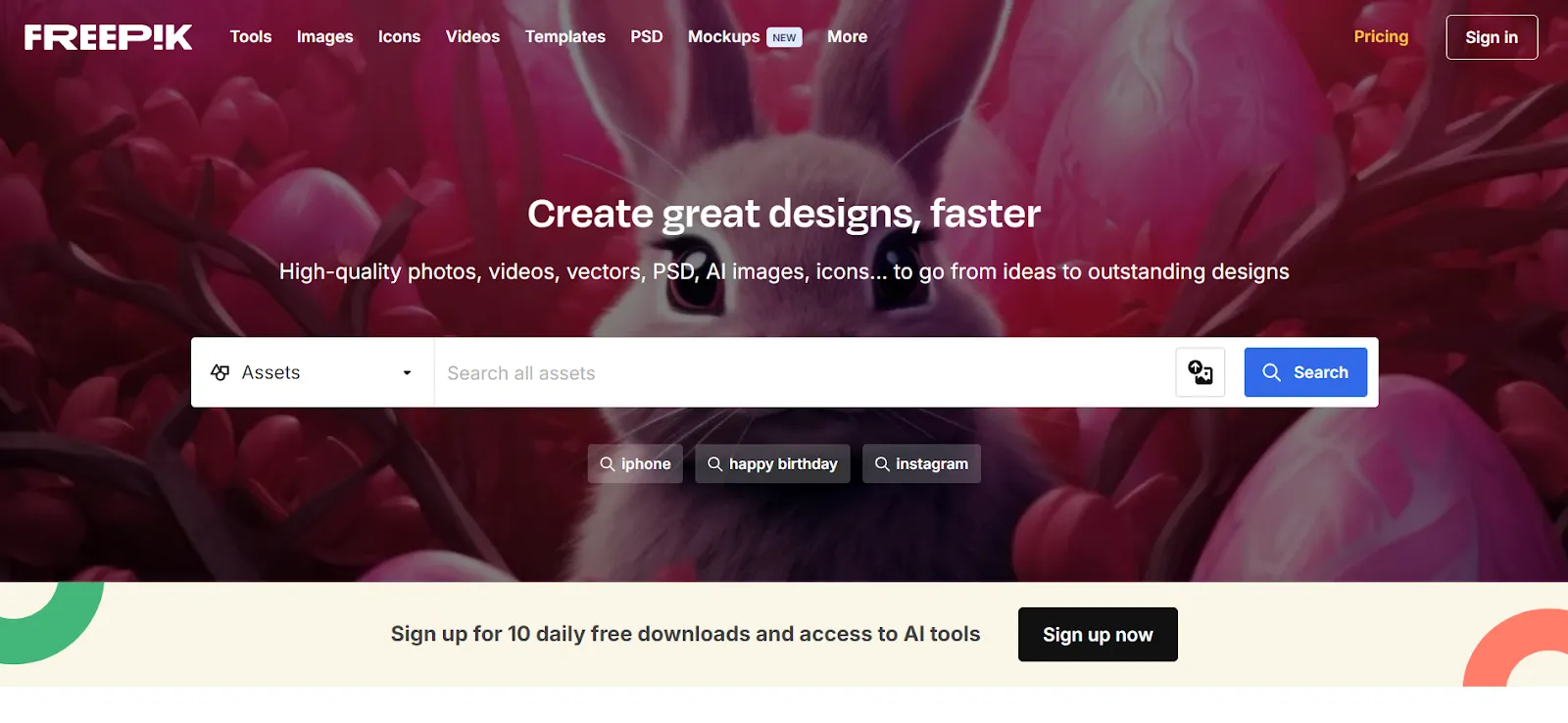
If you’re looking for graphic design materials, Freepik is a great resource for both personal and professional websites. It has a vast library of 19 million graphic resources which include images, vectors, icons, illustrations, and PSD files.
However, it requires proper attributions to the creators if you’re using the free resources for your website.
Freepik was designed to create amazing visual projects in different fields. It’s a great platform known for its amazing quality of assets which is perfect for casual and professionals both.
Pros and Cons of Freepik
| Pros | Cons | |
| 1 | High-quality resources | Daily download limits |
| 2 | Advanced AI image generation | Free resources require attribution |
| 3 | Easy-to-use search filters | |
| 4 | Affordable premium subscription plans | |
| 5 | Multi-language support | |
| 6 | Integrates with Freepik’s sister tools, Flaticon, and Slides | |
| 7 | Customizable resources | |
2. Shutterstock
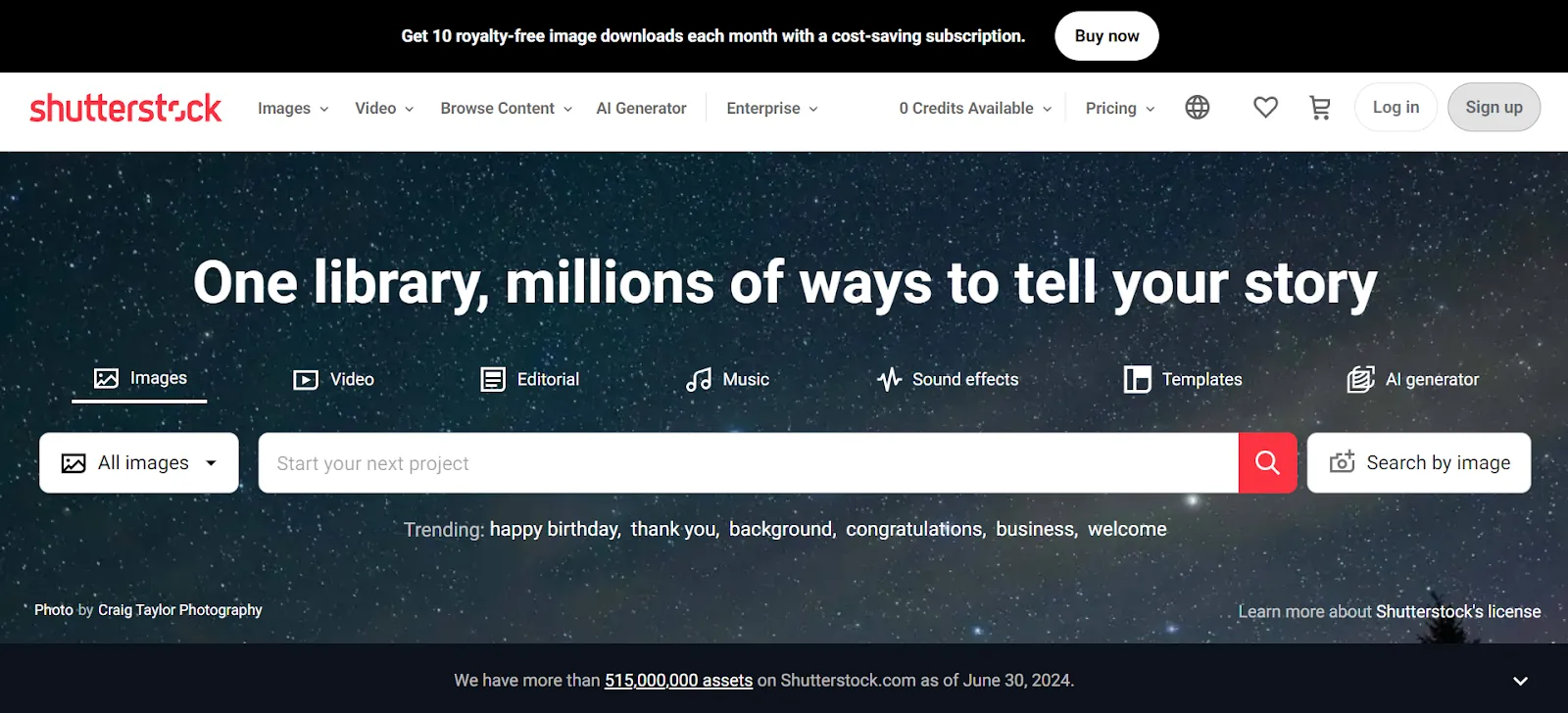
Shutterstock is a top choice for website designers, content creators, and marketers when it comes to stock images and multimedia content.
It also offers editing tools to customize your website images. Currently, it has over 500 million digital assets within the platform.
In 2003, this platform was first introduced as an online marketplace for assets. With over 420 million high-quality assets and millions of users worldwide, Shutterstock is the ultimate platform for content creators.
Pros and Cons of Shutterstock
| Pros | Cons | |
| 1 | Flexible licensing | A bit costly |
| 2 | Diverse media collection | Premium content selection is limited |
| 3 | Solid customer support | |
| 4 | Integrated editing tools | |
| 5 | Consistent update | |
| 6 | Advanced searching functionalities | |
| 7 | Quality image and video assets | |
3. Pixabay
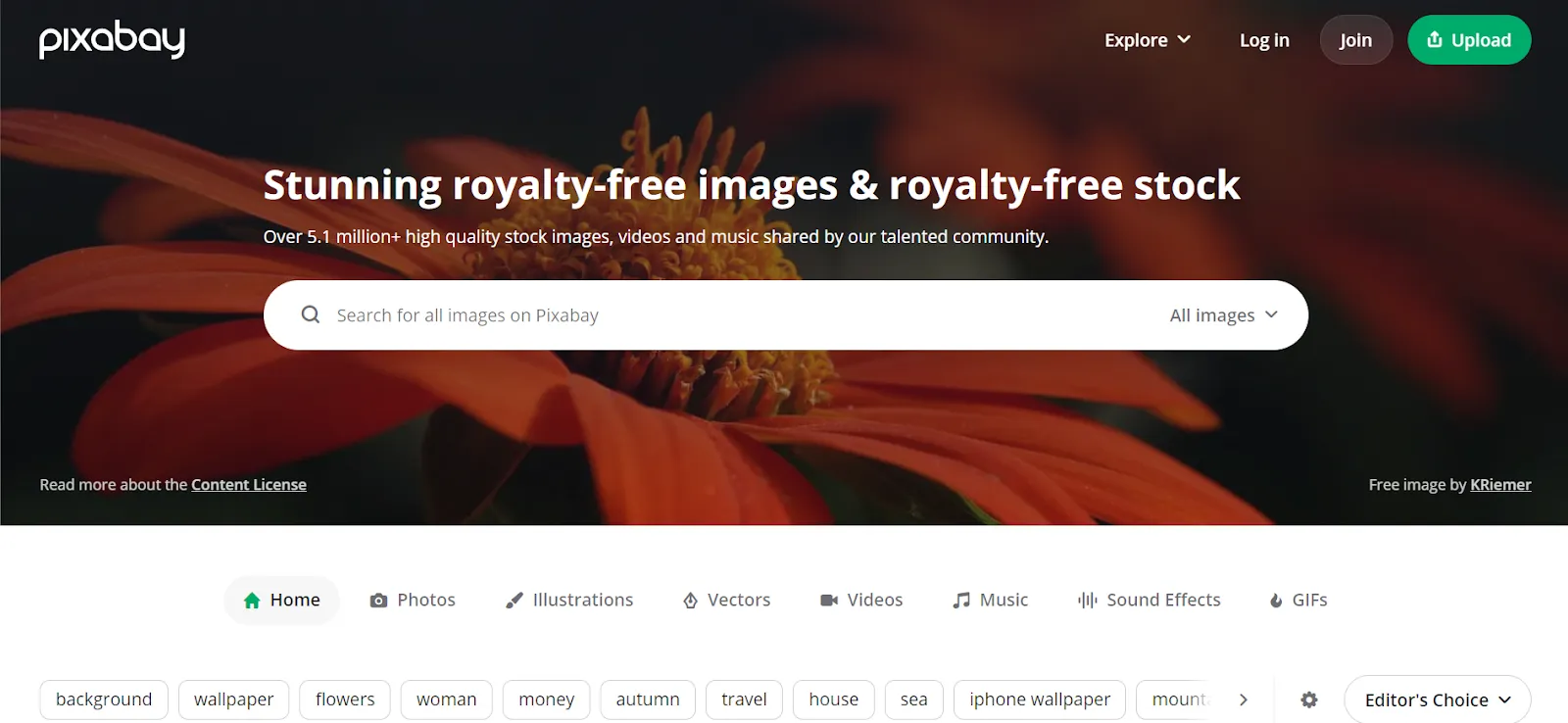
Pixabay is a popular platform where you can find 5.1 million royalty-free images, photos, illustrations, and vectors. You can download copyright-free images for free but the platform motivates you to make donations to encourage the creators.
Still, Pixabay is a great platform for offering perfect resources for creative and official tasks. Free-to-pay users can also have more opportunities to download real user-generated content for free.
Pros and Cons of Pixabay
| Pros | Cons | |
| 1 | Get royalty-free right to download, copy, and modify assets | Amazon’s unavailability for Pixabay images |
| 2 | No need to attribute the image creator or platform | Pixabay artwork and design are not printable for sale |
| 3 | Over 2.7 million+ content assets | |
| 4 | Multiple language options are available | |
| 5 | Perfectly integrates with famous design tools | |
| 6 | User-friendly search results | |
| 7 | Mobile accessible platform | |
4. Vecteezy
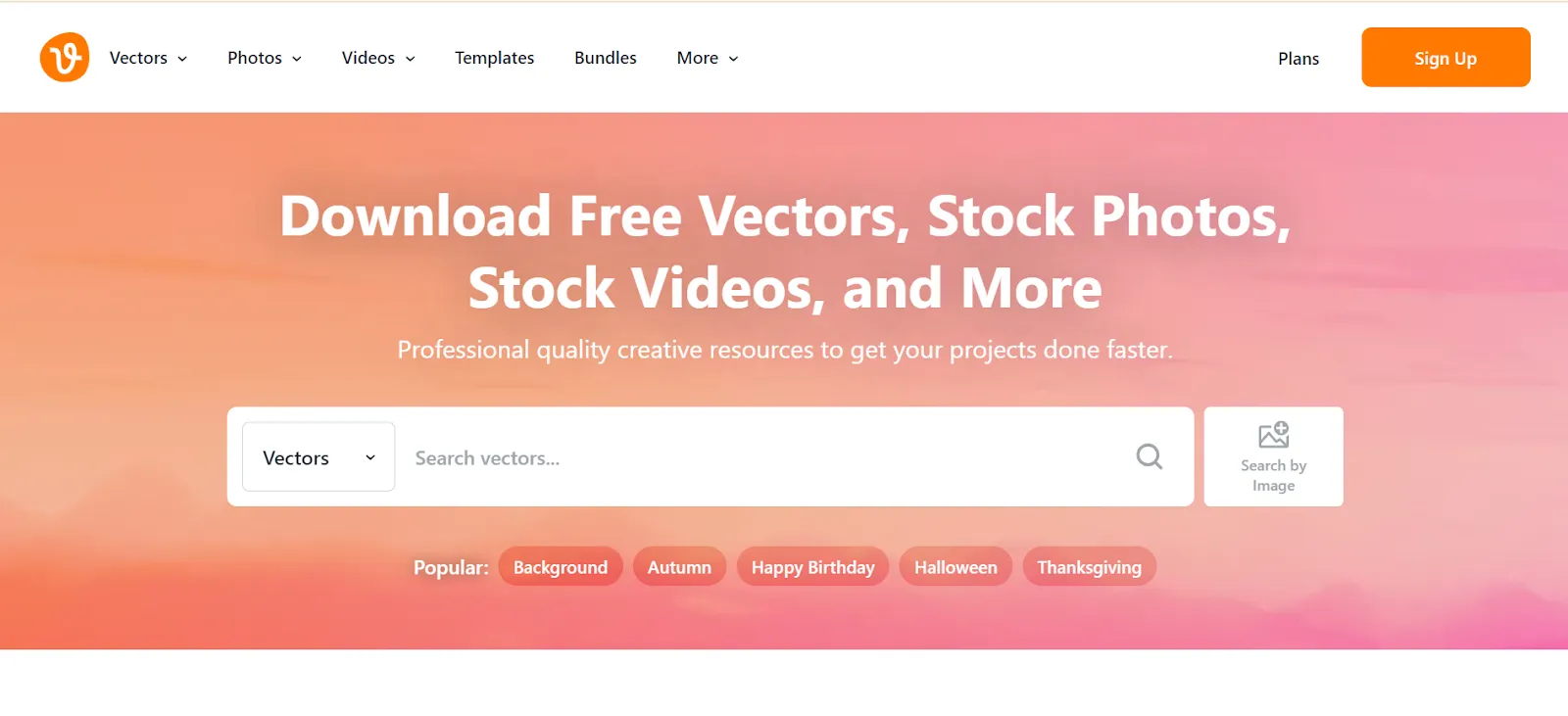
Vecteezy allows you to license royalty-free images in PNG, PSD, SVG, etc. formats. This platform will make your image search journey easier with smart filtering options. Users from all around the world love this marketplace because of its user-friendly interface and 10+ millions of assets.
One of Vecteezy’s prominent features is simplicity. Its UI interface is pretty simple and doesn’t have any complex functionalities, making it a perfect platform for almost all sorts of design.
Pros and Cons of Vecteezy
| Pros | Cons | |
| 1 | Affordable pricing model | Site down issue |
| 2 | Comes with a built-in SVG image editor | A limited selection of photos |
| 3 | Huge resource library | |
| 4 | Free assets are available for all | |
| 5 | Tutorials and resources to understand their platform | |
| 6 | Vector customization tools | |
| 7 | Licensing options are available for premium contents | |
5. iStock
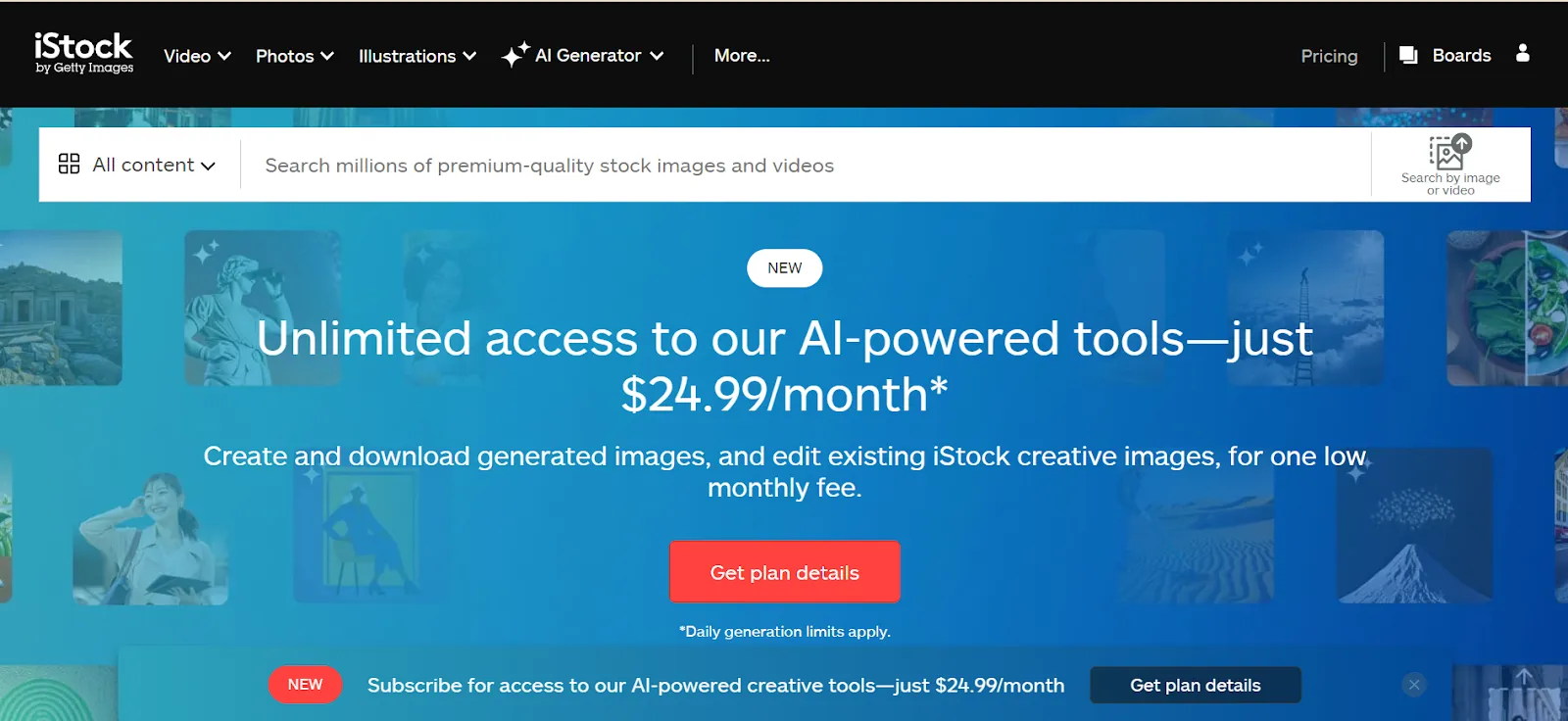
iStock offers a heavy-curated collection of royalty-free images, videos, illustrations, and AI generators. It’s a top choice for website owners and marketers because of the image quality and user experience it provides.
With its wide range of exclusive stuff, you can boost your online presence to the next level as a creative professional. In iStock, you will get different types of amazing, professional-looking photos, illustrations, and vector graphics.
Pros and Cons of iStock
| Pros | Cons | |
| 1 | Offers free trial option | Free limited options |
| 2 | Integration with Dropbox and Adobe CC | Higher cost for premium contents |
| 3 | Content specially optimized for social media | |
| 4 | Unique, crowd-sourced content | |
| 5 | Free image preview before downloads | |
| 6 | “Board” feature for saving and organization | |
| 7 | Video content is available in 4K quality | |
6. Depositphotos
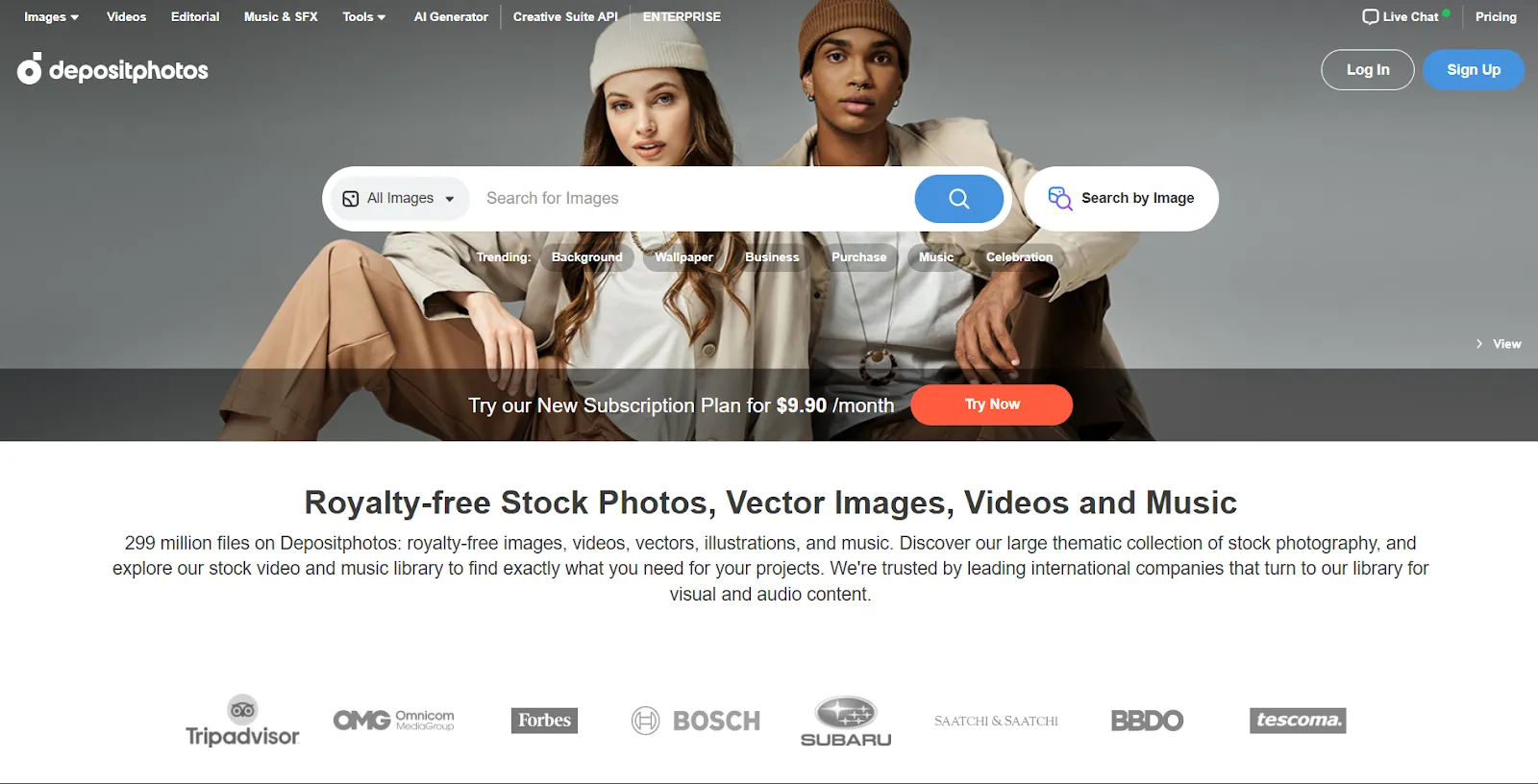
Another great royalty-free asset source is Depositphotos. It’s one of the well-known sites among veteran users and offers a collection of over 300 million worth of vector graphics, photos, elements, and stock photos. You can find anything in its deposits.
Not just stock elements, Depositphotos has features such as user-friendly search tools, amazing quality assets, and affordable pricing plans.
Pros and Cons of Depositphotos
| Pros | Cons | |
| 1 | Powerful AI-based search tool | Premium video plans are a bit costly |
| 2 | Premium editorial choices | |
| 3 | Image enhancing features | |
| 4 | Great user support and assistance | |
| 5 | Flexible subscription plans | |
| 6 | AI image generation feature | |
| 7 | Music and SFX effects are available | |
7. Burst by Shopify
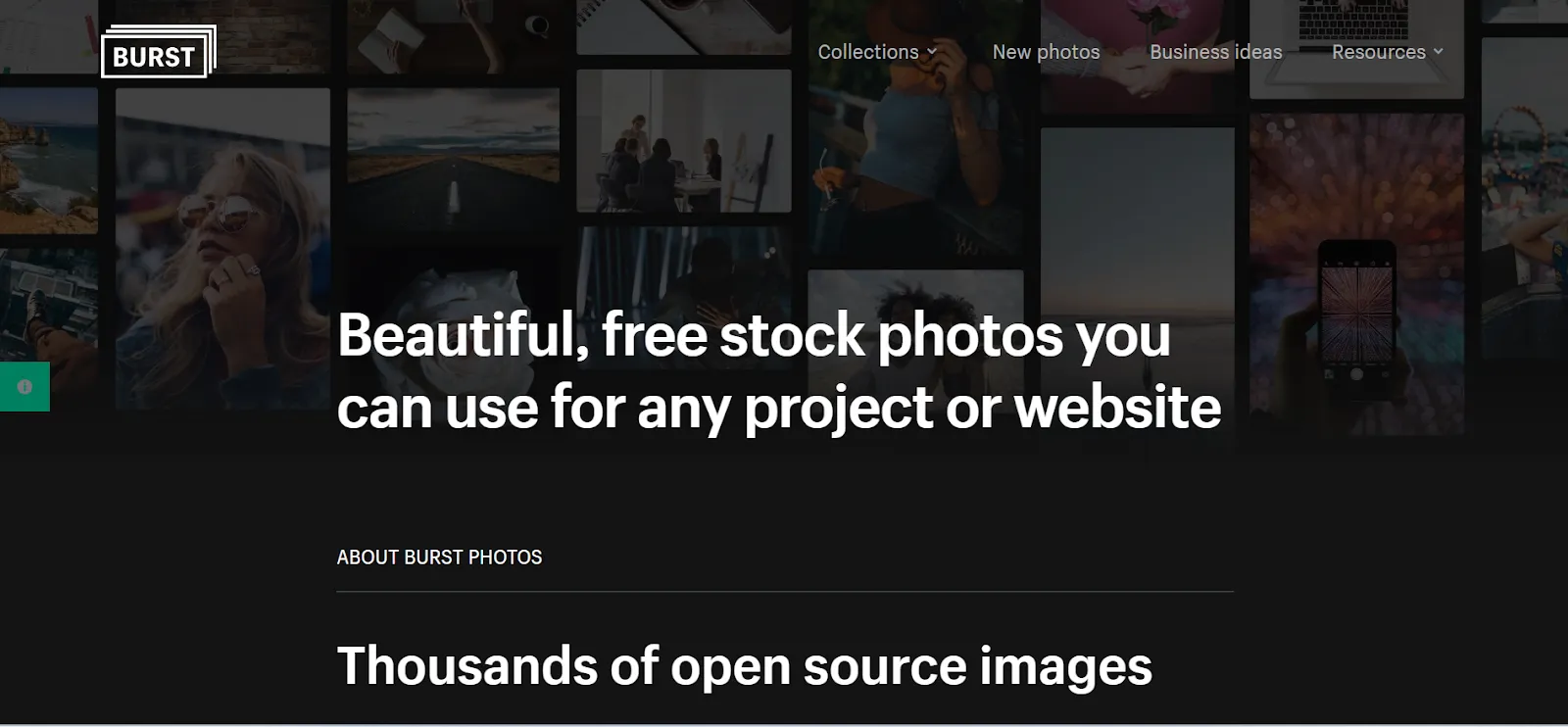
Burst is powered by the popular eCommerce CMS platform Shopify. It consists of ready-to-use web images for businesses from various industries and all of them are royalty-free.
As Shopify themselves are experts in web management, they understand the quality and type of images you’re looking for.
Pros and Cons of Burst
| Pros | Cons | |
| 1 | No attribution is required | You cannot resell the content |
| 2 | Free to use, copy, and modify images | Smaller library than some competitors |
| 3 | Trendy, up-to-date images | |
| 4 | Easy integration with Shopify | |
| 5 | Seamless user experience | |
| 6 | No sign-up is required for content downloads | |
| 7 | Excellent quality control for images | |
8. Adobe Stock
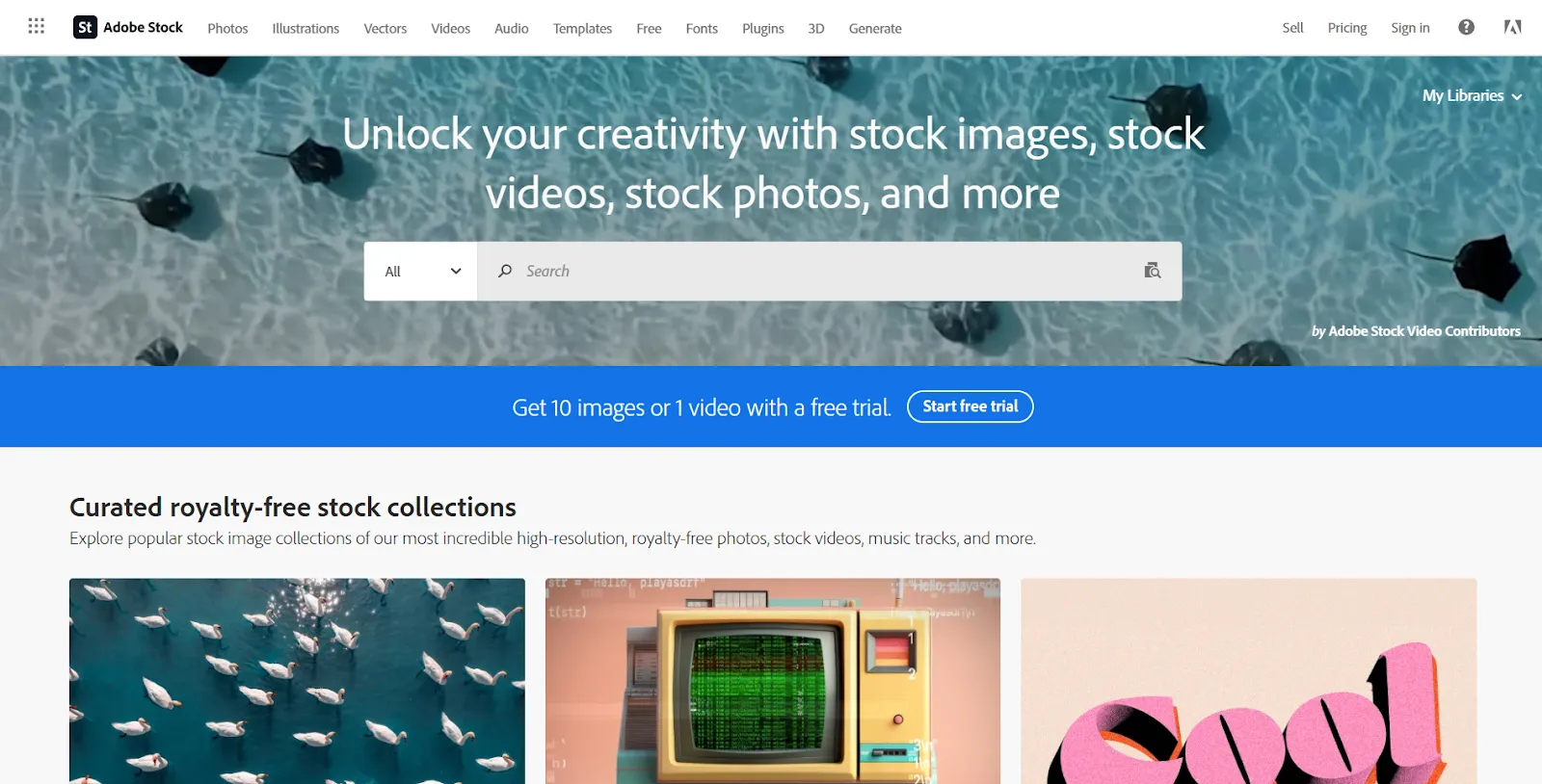
Adobe is already known for developing some of the best photo and video editing software out there. Well, they have a massive list of 100 software and application packages available for purchase.
To create a complete content editing experience, Adobe established Adobe Stock, a versatile platform offering millions of high-quality assets, including photos, vectors, illustrations, videos, and templates.
The best part of Adobe Stock is all its assets perfectly and seamlessly integrate with all of Adobe’s tools.
Pros and Cons of Adobe Stock
| Pros | Cons | |
| 1 | 200 million high-resolution assets | A bit costly in price |
| 2 | Advanced search filters for assets | Requires subscription for continuation |
| 3 | AI capabilities and features | |
| 4 | User-friendly interface for the platform | |
| 5 | Contributor program available | |
| 6 | Easy one-click trial and preview for assets | |
| 7 | Flexible licensing options | |
9. Canva (Most Simple one)
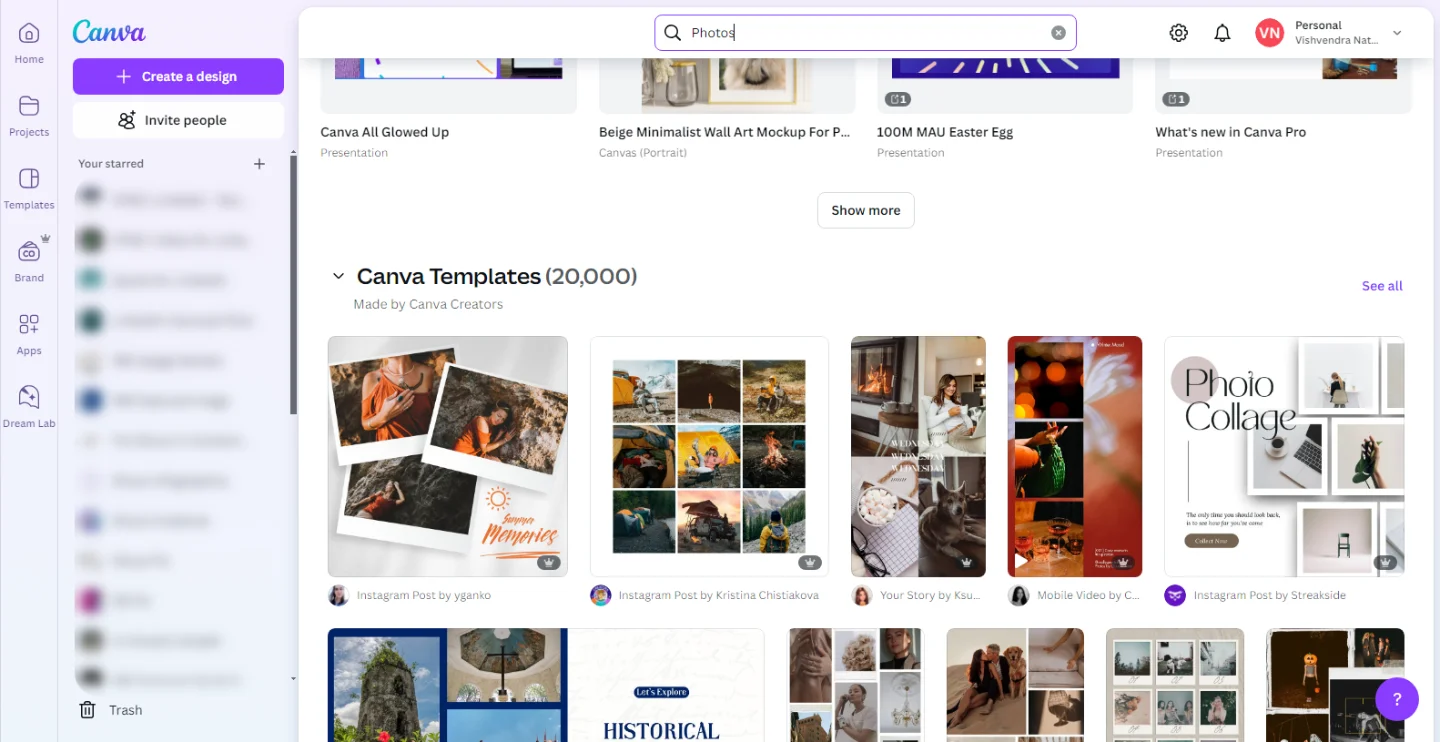
Canva is your go-to platform for every type of image, banner, graphics, and infographic editing.
Other than image editing, Canva has a set of different editing options like presentations, video, social media content, marketing, and office work all within one platform. You can even change the size of the edited post based on size and type.
You may be thinking where is the asset part? Well, Canva offers a wide range of 100 million assets, designs, videos, and elements. Just imagine and make your content!
Pros and Cons of Canva
| Pros | Cons | |
| 1 | 200 million high-resolution assets | A bit less editing capabilities than some competitors |
| 2 | Advanced search filters for assets | |
| 3 | AI capabilities and features | |
| 4 | Magic AI editing options | |
| 5 | Magic ratio changer within the design | |
| 6 | Contributor programs available for different countries | |
| 7 | Multiple download options are available | |
10. Unsplash
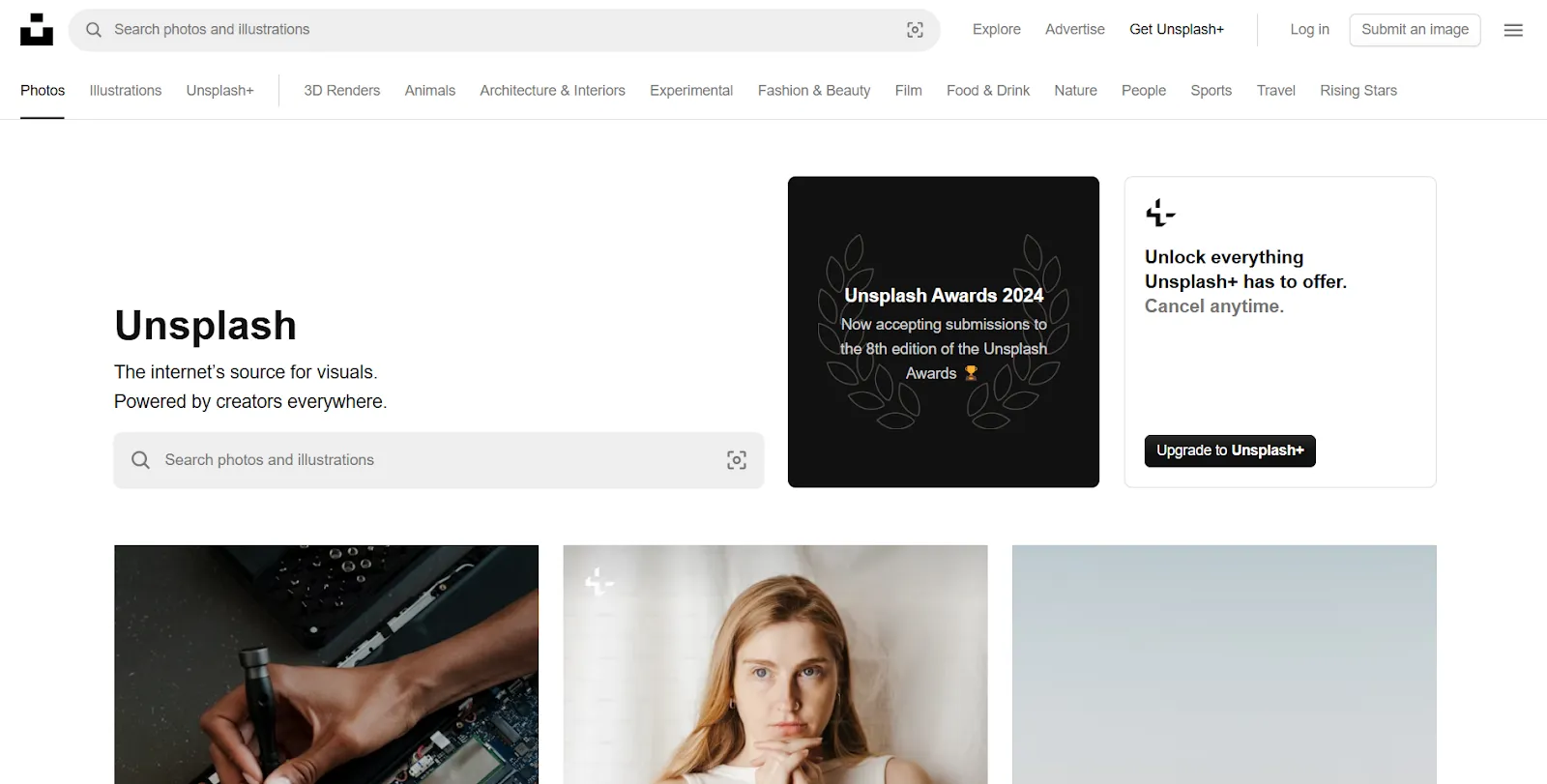
The final website on our list is Unsplash, which is a great source offering high-quality royalty-free images and professional photos. You can use Unsplash for personal and commercial projects.
Unsplash has a vast library of 3 million+ image assets. From professional designs to personal assignments, Unsplash offers diverse visuals that cater to nearly every need.
Pros and Cons of Canva
| Pros | Cons | |
| 1 | Free access to download | Only limited to images |
| 2 | Direct integration Canva and Adobe Spark | |
| 3 | Personalized image recommendations | |
| 4 | Free platform! | |
| 5 | Available in mobile | |
| 6 | Easy to navigate and simple UI | |
| 7 | Dynamic API integration | |
7 Tips to Use Royalty-Free Images for Your Website (Landing Page, Product Pages, and Blog Posts)
Royalty-free images are a great way to communicate with your audience and showcase your brand’s message. Whether it’s a landing page, product page, or blog post, a royalty-free image can enhance your content value a few times better!
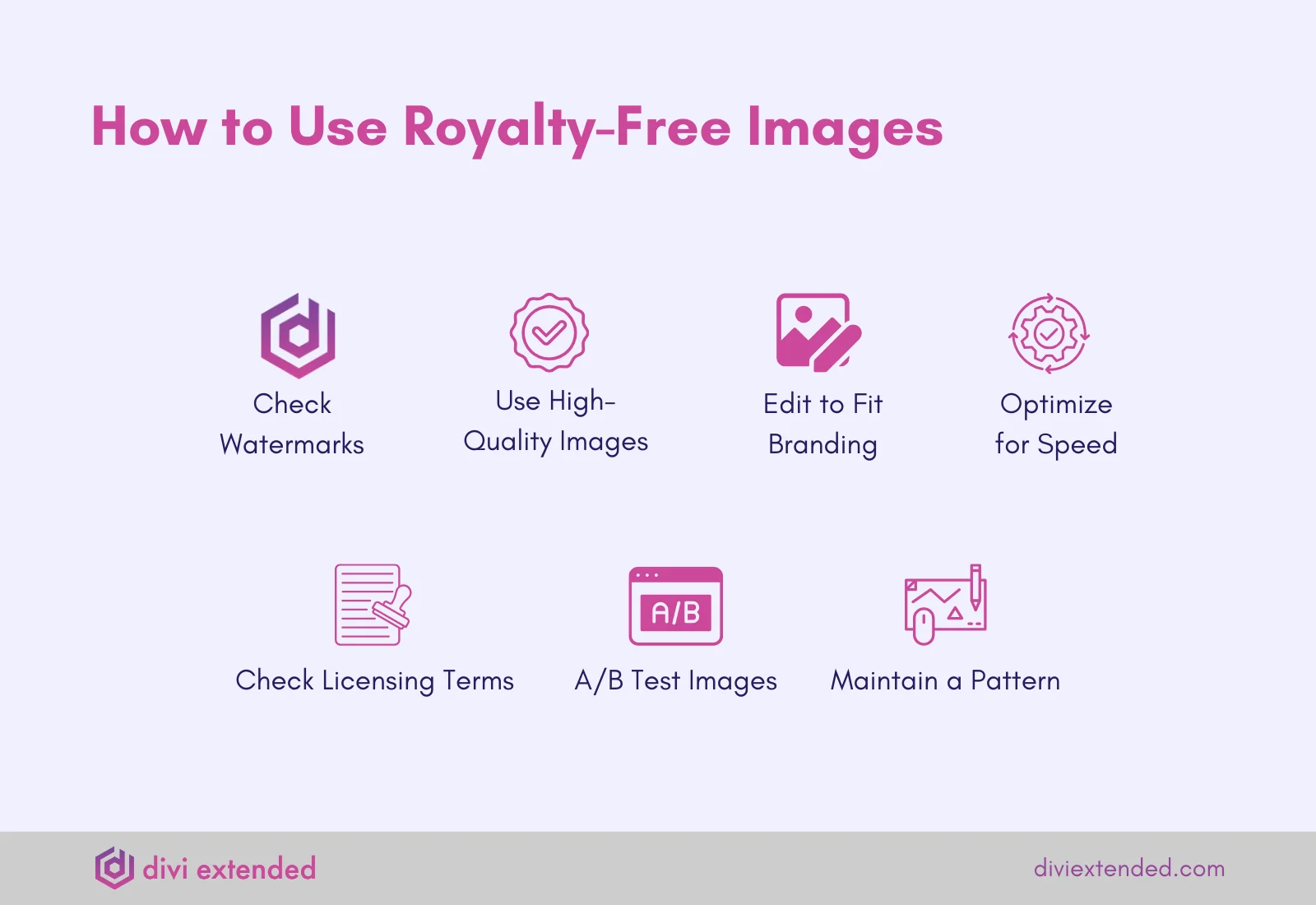
a. Look for Watermarks
Many royalty-free image platforms have transparent yet slightly visible watermarks all over the image. Using images with watermarks can undermine your website’s value and image. Always check for any watermarks after you purchase the proper license according to your needs.
b. Select High-Quality Images
Website images need to be adaptable to any devices and browsers that your audience is using. The photo you choose must be high-quality, crisp, professional, and in the right color tone. When choosing royalty-free images, ensure they are high resolution and fit every screen type without losing clarity.
c. Edit to Fit Branding
Royalty-free images are usually created with thousands of users and use cases in mind. You must fit the image according to your website’s brand guidelines (size, tone, logo positioning, text overlays, etc.) to make the most out of it.
d. Optimize for Speed
High-resolution images often cause longer page load times. It can make your website visitors frustrated and increase bounce rates. When using royalty-free images, you often need to compress them for speed optimization. To simplify the process, you can use tools like TinyPNG, Image Compressor by Website Planet or JPEG Optimizer to compress your images and improve user experience.
e. Maintain Visual Style and Color Palette
You must maintain a pattern in your website to keep design consistency across all the pages. For this, you need to manage a visual style and color palette when choosing royalty-free images from the web.
f. Check Licensing Terms
Always verify what the license allows and does not allow in terms of using royalty-free images. Many websites and website owners face legal penalties for simply not reading the licensing terms carefully.
g. A/B Test Images (Optimize for Conversions)
Doing A/B tests with royalty-free images will help you understand how well an image is performing regarding traffic and lead generation, conversion, and engagement. Sites like GrowthBook help you test your images but you can manually test them as well.
5 Best Practices for Using Royalty-Free Images
When it comes to using royalty-free images for your website, it’s crucial to keep some major facts in mind so that you don’t run into legal consequences.
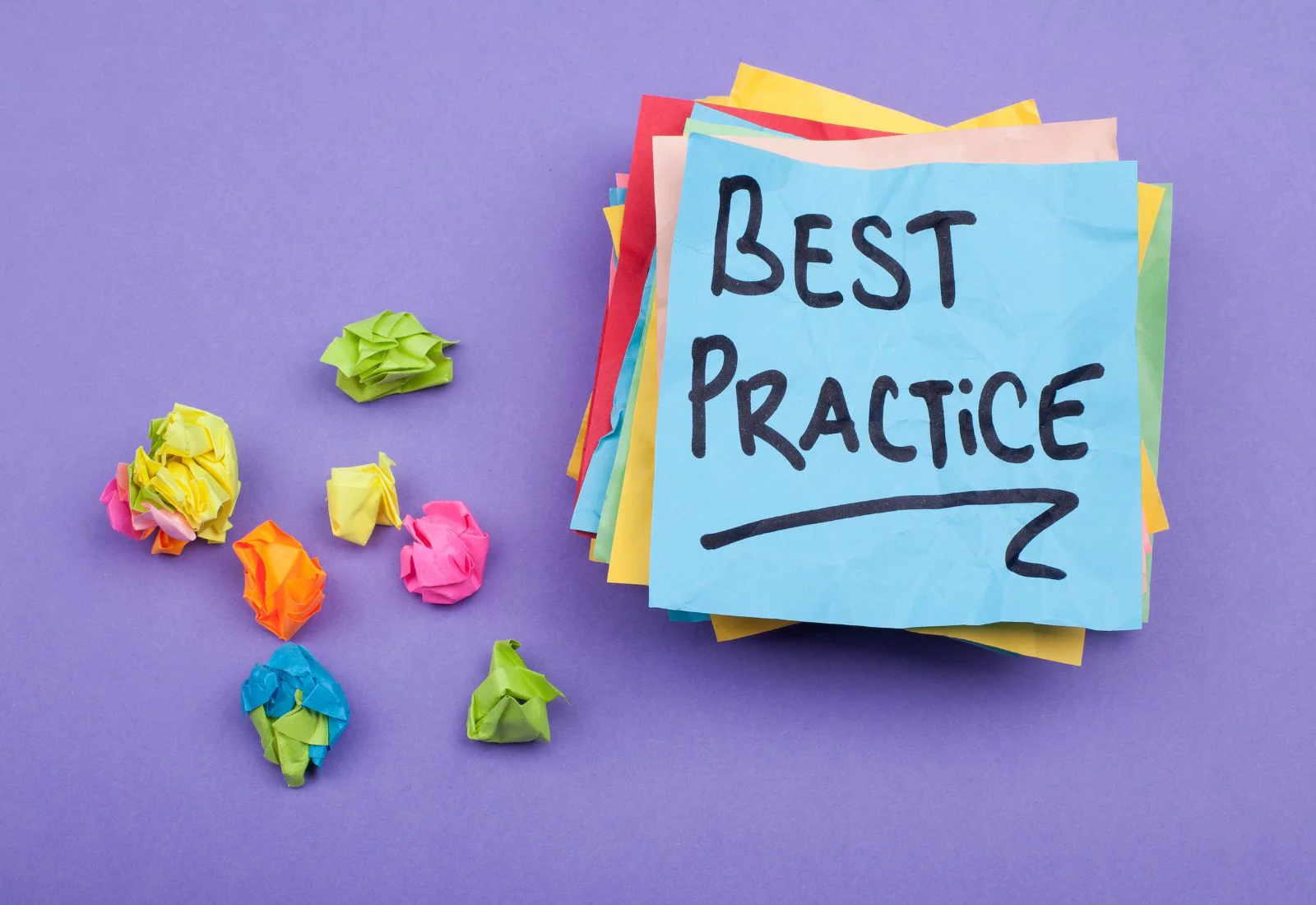
1. Read the License Carefully
According to copyright law, you must ask for permission from a creator if you want to use an image. If you don’t, in simple cases, the owner may ask you to remove their image from your website.
But in severe cases, you could get sued for using someone else’s image. So, before using any image from the web, you must read the license carefully. Most image licenses follow the following criteria: usage type, modification, attribution, number of usages, etc.
2. Search by Proper License Name
Another effective action you can take is to search by license. Some common online image license types include- public domain, creative commons, rights-managed, and royalty-free. To narrow down your search for website images, you can search images online by a specific license type.
3. Be Ethical
Every artist invests a significant amount of creativity, effort, and time to create an image. We should all respect that. Every royalty-free web image ensures that the artist is fairly compensated for their work.
By using an image ethically, you’re supporting the artist community by showing professionalism.
4. Edit for Uniqueness
To align the image with your brand you can apply some filters. If you want to make it unique and out of the box then go for cropping or adding text. Though you are using royalty-free images, this touch will differentiate them from the stock images.
There are more stock image users on the internet and others can also use the same picture. So, if you make some differences you are marking your business.
5. Use Reputable Sources
Royalty-free images indeed cost more when you are downloading images from trusted sites like Unsplash or Shutterstock. Some third-party websites demand to give you copyright-free pictures but they are not reputable. And chances are that you can be attacked by unknown viruses.
So, though it’s costly, try to get images from established sources and if you have budget issues try to make your image through Canva.
5 Benefits of Using Royalty-Free Images
Royalty-free images come with legal rights and reservations, true. But still, it’s the most widely used source of images across all types of websites.
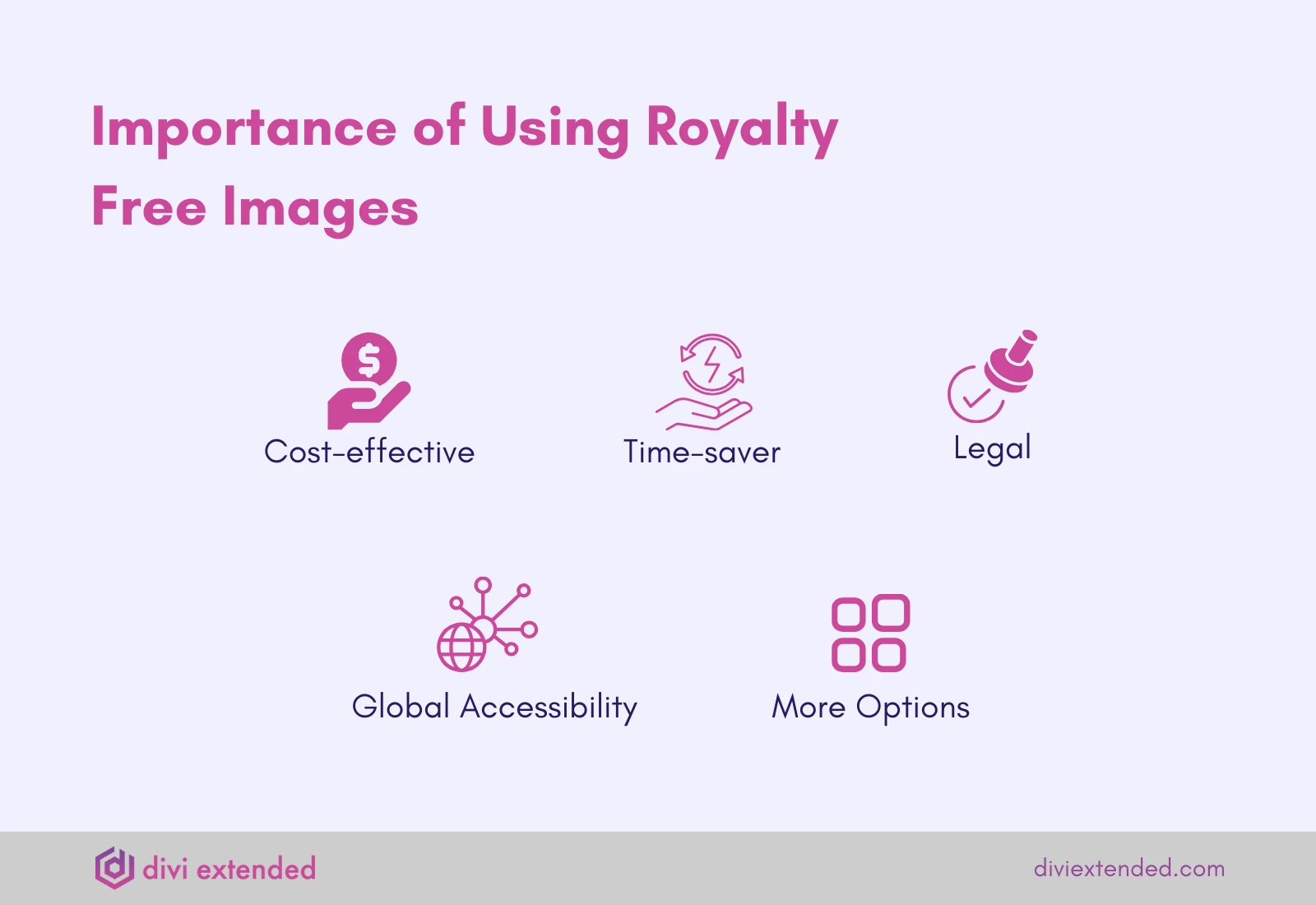
i. Cost-effective
Using royalty-free images can go mild on your wallet. It’s cheaper than hiring a photographer or graphic designer or approaching a design agency to get your web visuals ready.
ii. Time-saver
If you decide to generate an image from scratch, it requires more time, effort, and creativity (not to mention the cost of hiring full-time designers). You can easily save time in image generation by simply purchasing royalty-free images.
iii. Legal Peace of Mind
When you use royalty-free images for your website, you can sleep in peace–knowing that nobody is going to sue you for using their images illegally. You can thrive with your web content with attractive visuals by following some simple terms. It will give you legal peace of mind!
iv. Wide Selection of Images
There are millions of royalty-free images online. So, you can choose from a wide selection and find the perfect matched images for your website in no time. It’s a win-win.
v. Global Accessibility
Most royalty-free image sites can be accessed from anywhere across the world and can be used similarly. Suppose you’re a website owner from Uganda.
In that case, you can easily use a royalty-free image created and published from Morocco or India within seconds and without regional boundaries.
Legal Considerations While Using Royalty-Free Images
You should be very mindful when it comes to using royalty-free images. Here are some major legal considerations that you should keep into account:
Understand the Image Usage Rights and Attributions
It’s important to understand whether an image is licensed as royalty-free or under the Creative Commons. In some license terms, you need to give credit or attributions to the artist or image source/website (from where you’ve collected the image) to avoid license term violation.
Properly Credit Photographers and Platforms
If you want to convey credit to the photographers or the image platform, ensure you’re doing it correctly. You must include the photographer’s name and/or link to the platform source if attribution is required.
Example: “Photo by [Photographer’s Name] on [Platform Name].”
Editorial vs. Commercial Use
Image used in Editorial purposes means utilizing images for informative or journalistic contexts, suppose— educational materials or news articles. These sectors generally don’t promote anything for sale and directly sell or endorse products. So check if the images are for editorial use only.
In terms of Commercial use, you are permitted to utilize the images for advertising, marketing, or packaging. You can undoubtedly go for promoting services, brands, or products. Before using any royalty-free image it’s necessary to check out the restrictions.
Model and Property Releases
Sometimes any images may include recognizable individuals or properties. In that case, it’s better to have consent from the model or property owner through a release form. It indicates that the property owner or the model of your pictures doesn’t have any problem with the images and you can use them publicly.
Geographic Restrictions
There is another restriction while using images even though they are royalty-free, Geographic restriction. Certain image licenses may include limitations according to specific locations or regions. If you want to use your image globally then you must check this point in the license details.
6 Image Terms You Must Know
| Terms | Definitions | |
| 1 | Rights-managed | It means you get to purchase a license once and use it one time. |
| 2 | Royalty-free | Images can be used unlimited times for a one-time fee. |
| 3 | Extended licenses | You can use an image for product or package design and resell it to the end users. |
| 4 | Copyright images | It means a person or platform owns the image legally. |
| 5 | Public domains | Consist of images not reserved by any copyright law and can be used freely. |
| 6 | Creative Commons (CC) | Images under Creative Commons (CC) can be used, modified, and distributed across web platforms as long as you’re following the licensing guidelines and attributions. |
How to Create Your Royalty-Free Images?
If you currently don’t have the budget to spend on royalty-free images, here are some amazing alternatives where you can create your images:
Basics of DIY Photography for Websites
For DIY photography, you can collect professional DSLRs from a friend or purchase one. However, the latest iPhones and Samsung S-series phones can give you equivalent professional images.
If you’re taking photographs outdoors, consider shooting during the golden hours– early morning and late afternoon. The natural light is usually soft and warm during this time.
If your web images require indoor setup, you should use artificial lights such as softboxes or ring lights. Implement the rule of thirds for a balanced composition. Use a tripod to stabilize your camera and backdrops to enhance your subject.
Some subject ideas for you: capture candid moments in terms of lifestyle shots, take self-portraits if your website offers service-based business. For product photography, you can add minor props to create a better focus on your subject.
Using Graphic Design Tools
Canva is a great tool for creating in-house royalty-free images for websites. Currently, it has 170 million users globally. It brings simple drag-and-drop tools, template-based designs, AI image generation tools, and customizable design elements that you can use without any extra hassle.
Another famous tool is Adobe Spark which allows you to redesign templates for your web pages. It also comes with simple animation options so you can bring life to your images.
Editing and Enhance Your Images
If you’re planning to create your images, consider learning the basics of graphic design and editing techniques. This includes image sharpening and noise reduction, adding filters, texts and graphics, etc. You will find different types of photo editing software such as Adobe Photoshop or free tools like CapCut. All you need is to add a personal touch that makes you different from the others and relevant to your content.
Leverage AI Image Generators
Are you a good prompter and understand how AI works? If yes, then you can save lots of time and money. AI tools such as– DALL-E and Midjourney assist in creating amazing images based on your prompts. All you have to do is just describe the concept of your picture and share the specifications in the text. For better results, you can edit the image to give a brand touch.
FAQs
Can I use royalty-free images for commercial purposes?
It depends on the license you’re purchasing. If your license terms allow you to use royalty-free images for commercial purposes, you can use them. But, if it isn’t allowed, then consider not using any of them.
You might find yourself in a tough situation if the original owners find your content and file allegations of copyright infringement.
How can I find high-quality images for my niche website?
Start by searching on Google for relevant industry terms for your niche website and do thorough research on which site has the best images according to your needs. Along with Google, you can rely on Shutterstock, Unsplash, and Pixabay to find professional-level and high-quality images for your assets.
Are there any risks associated with using free images?
No, there is no risk of using any free images. By free it means that the image isn’t owned by anyone, so it doesn’t have any potential copyright infringement issues. Just make sure it doesn’t come with any restrictions.
Can I modify royalty-free images?
If you have the usage rights, then you can edit, resize, retouch, crop, and recolor your royalty-free images. The platform doesn’t hold any type of copyright issues as long as you are paying and law-abiding customers.
What’s the difference between royalty-free and copyright-free images?
The term ‘Royalty-free’ is used for images that are licensed for multiple usage (without ongoing fees) and ‘Copyright-free’ means that the digital asset (audio, video, soundtrack, etc.) is not protected by copyright by anyone.
Do I need to give attribution for royalty-free images?
If your royalty-free image is under the Creative Commons, then you must give attribution to the artist or platform for using their image on your website.
Wrapping Up
Images are the pictural language of our website. Sometimes images can describe more than what words cannot. When it comes to website images, it’s more crucial because they affect the traffic, lead generation, and bounce rates.
So, when you choose a royalty-free picture for your website or want to make your online presence loud, ensure that it resonates with the message you want.
Furthermore, when choosing copyright-free images, try to read the licenses and restrictions. If you don’t know the rules properly, you may get sued, even though you are buying the images.
We hope this blog helps with your quest to find the perfect royalty-free images at the best plan. May your business grow to the fullest in the years to come!

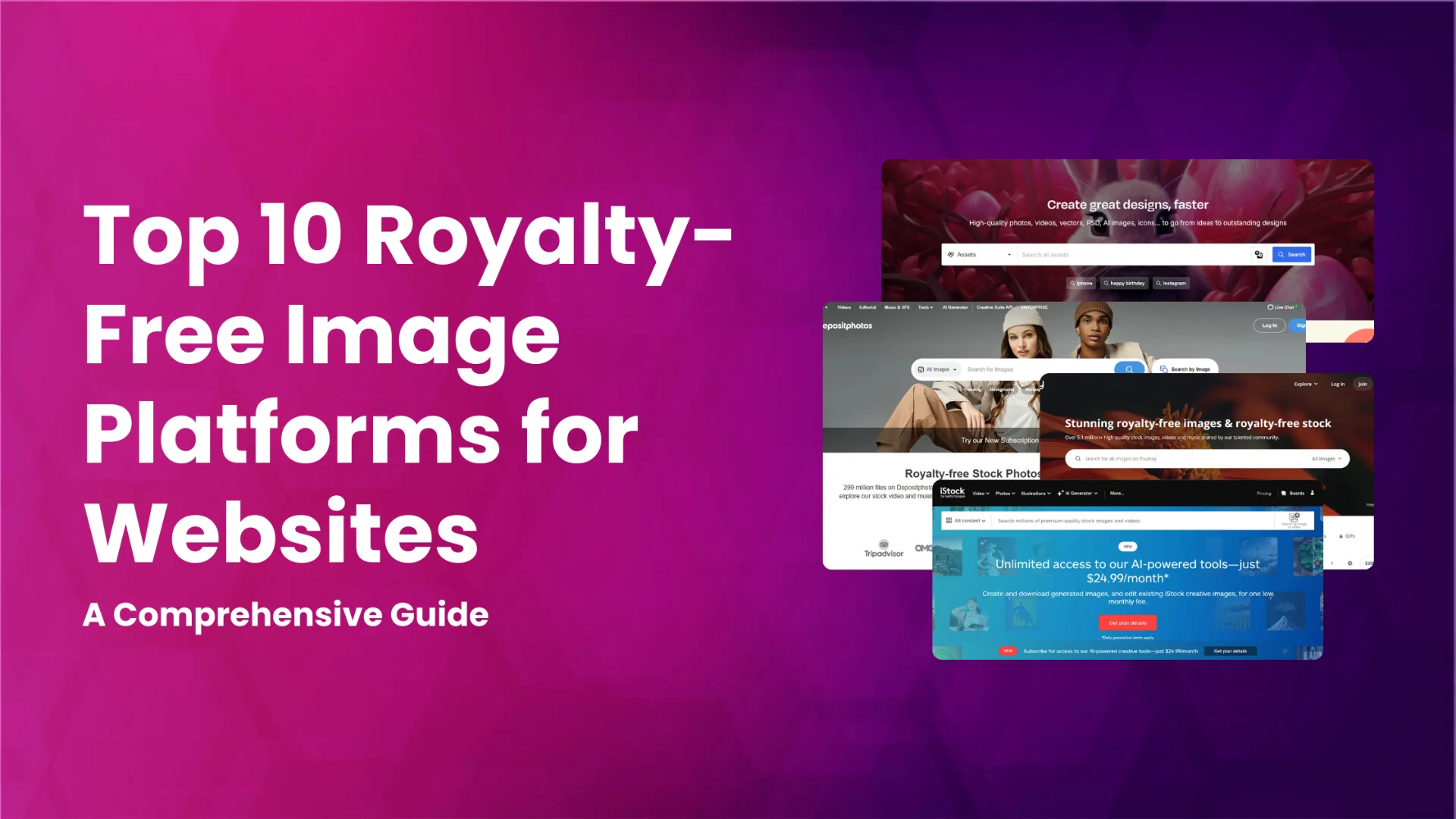
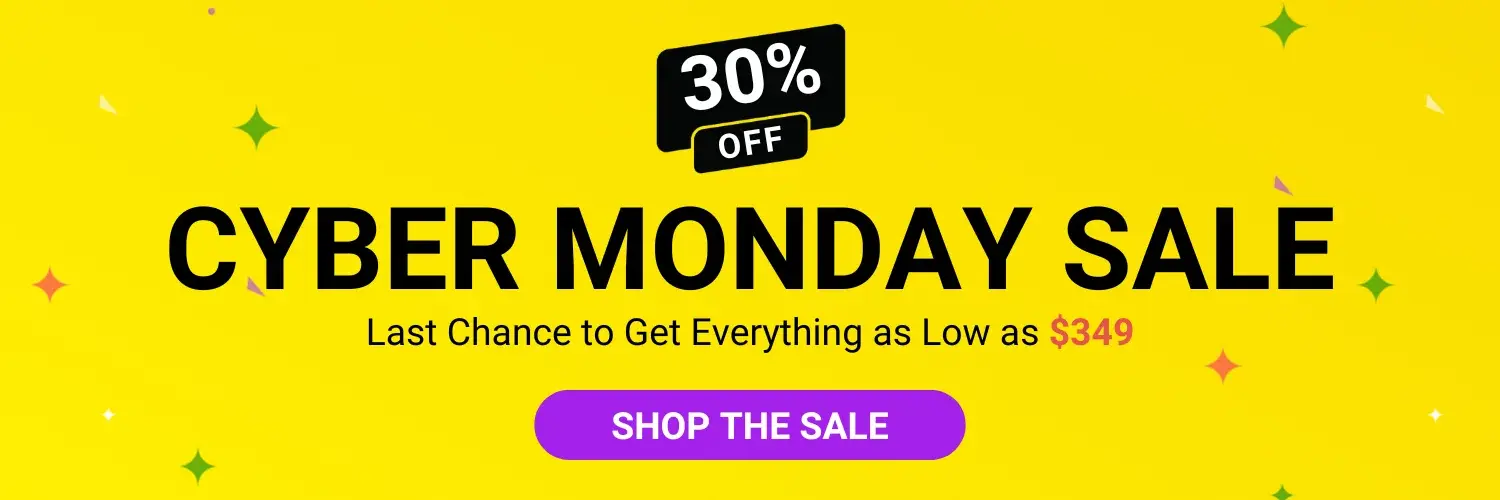
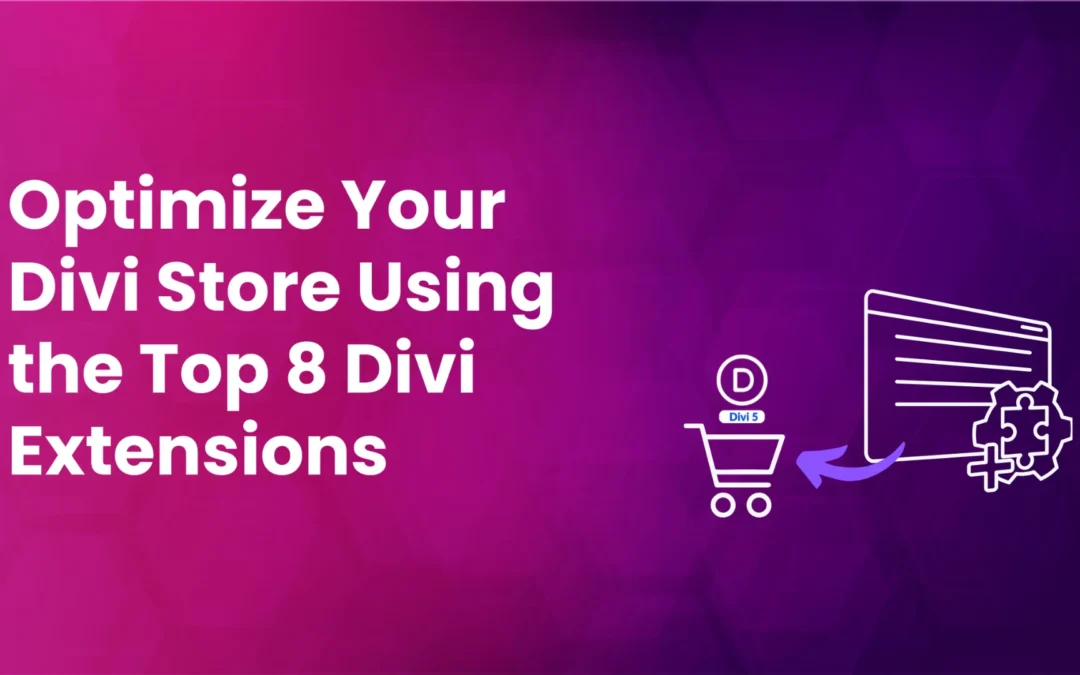

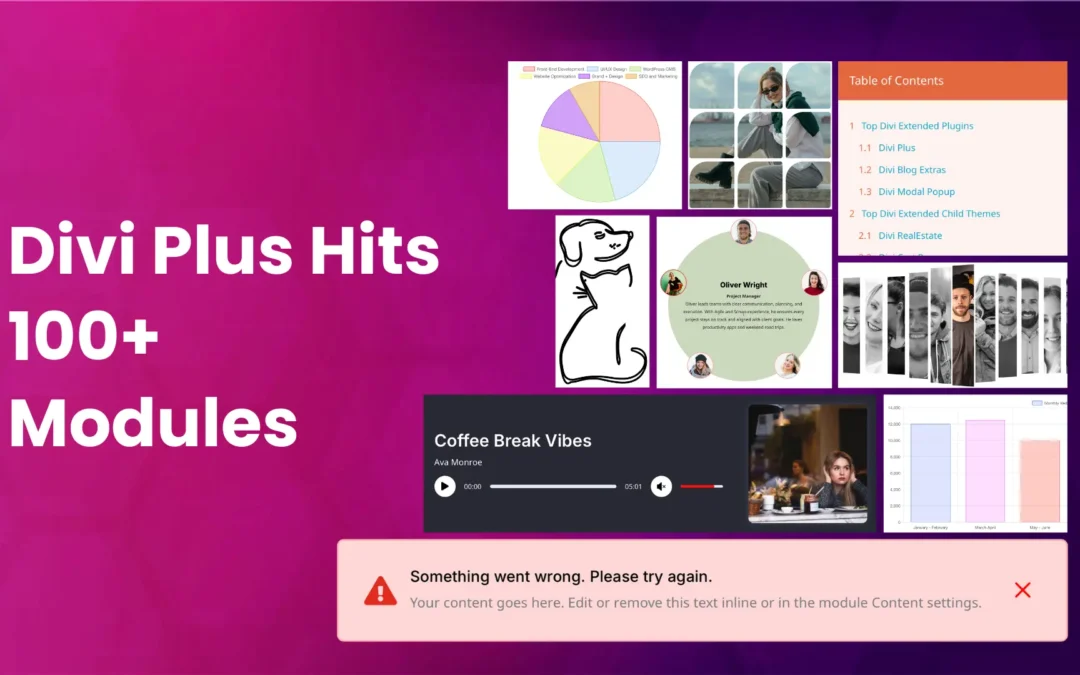


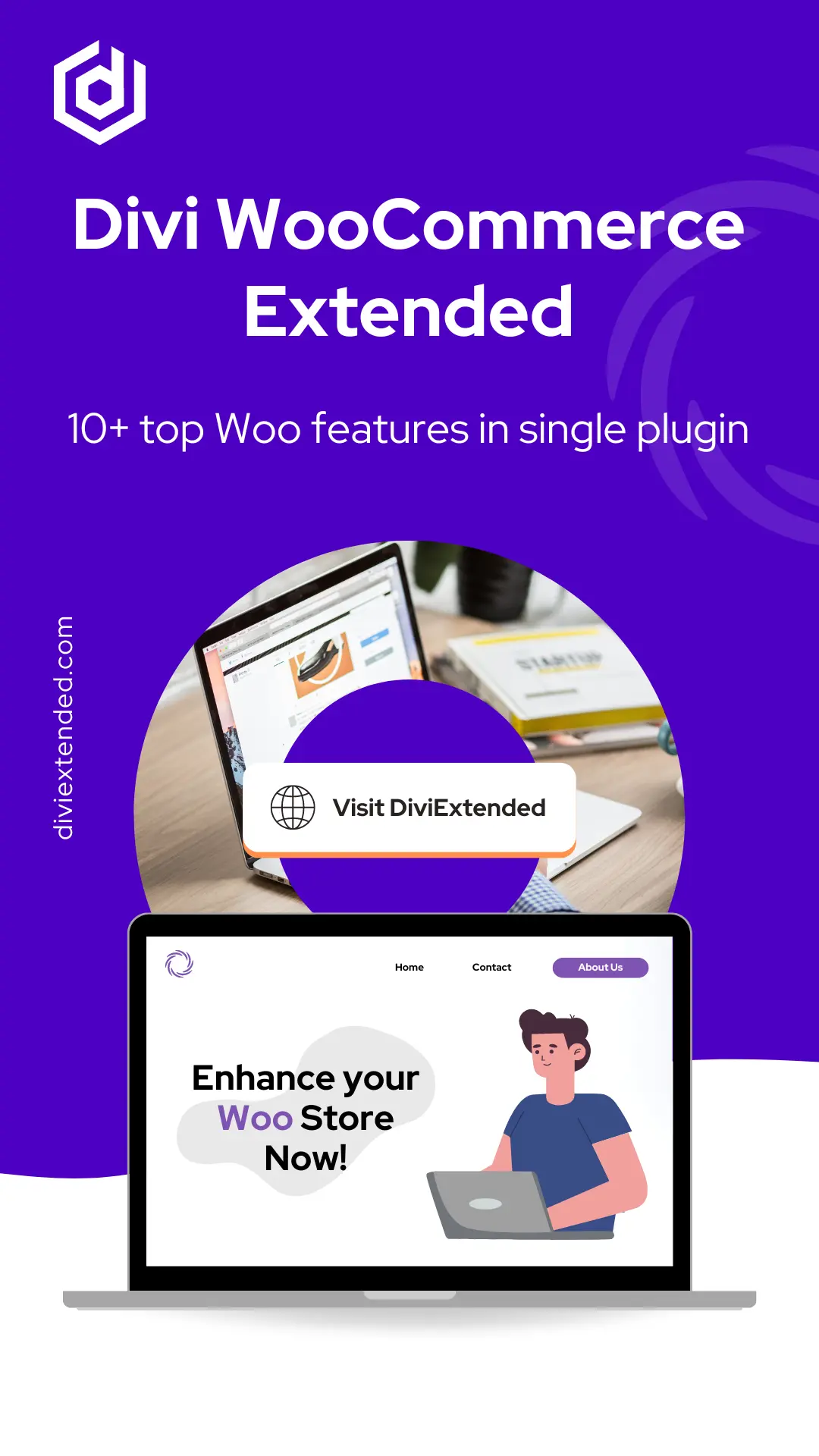

0 Comments